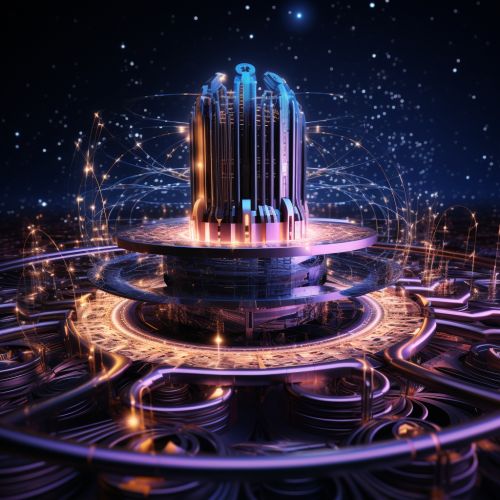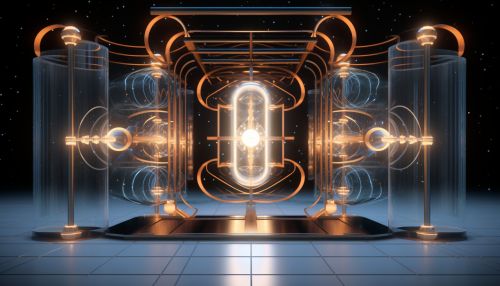Toffoli gate
Introduction
The quantum computing field has introduced several quantum logic gates, among which the Toffoli gate, also known as the "controlled-controlled-not" gate or "CCNOT" gate, holds a significant place. The Toffoli gate is a universal reversible logic gate, named after its inventor, Tommaso Toffoli, an Italian physicist and computer scientist.


Overview
The Toffoli gate is a type of quantum logic gate, which is a basic quantum circuit operating on a small number of qubits. They are the building blocks of quantum circuits, like classical logic gates are for conventional digital circuits. Unlike many classical logic gates, the Toffoli gate is reversible, meaning it can be used to perform computations both forwards and backwards.
Operation
The Toffoli gate operates on three qubits: two control qubits and one target qubit. The gate flips the state of the target qubit if and only if both control qubits are in the state |1⟩ (a state in the quantum state space). If any of the control qubits are in the state |0⟩, the gate leaves the target qubit unchanged.
Mathematical Representation
The Toffoli gate can be represented by an 8x8 matrix, as it operates on three qubits. The matrix representation of the Toffoli gate is a permutation matrix, which reflects the gate's reversibility.
Implementation in Quantum Circuits
In quantum circuits, the Toffoli gate is often used to perform reversible classical computations. It is a key component in the construction of quantum adders, quantum multipliers, and other complex quantum algorithms such as Shor's algorithm and Grover's algorithm.
Universal Quantum Computation
The Toffoli gate, in combination with the Hadamard gate, forms a universal set for quantum computation. This means that any quantum computation can be performed using a combination of these two gates.
Physical Realizations
The Toffoli gate can be physically realized using a variety of quantum systems, including trapped ions, superconducting circuits, and photonic systems. The specific implementation depends on the physical properties of the quantum system.
Challenges and Future Directions
While the Toffoli gate is a fundamental component of quantum computing, its implementation in physical systems presents several challenges. These include the need for precise control over quantum states and the difficulty of maintaining quantum coherence. Future research in quantum computing will likely continue to focus on improving the reliability and efficiency of Toffoli gate implementations.
